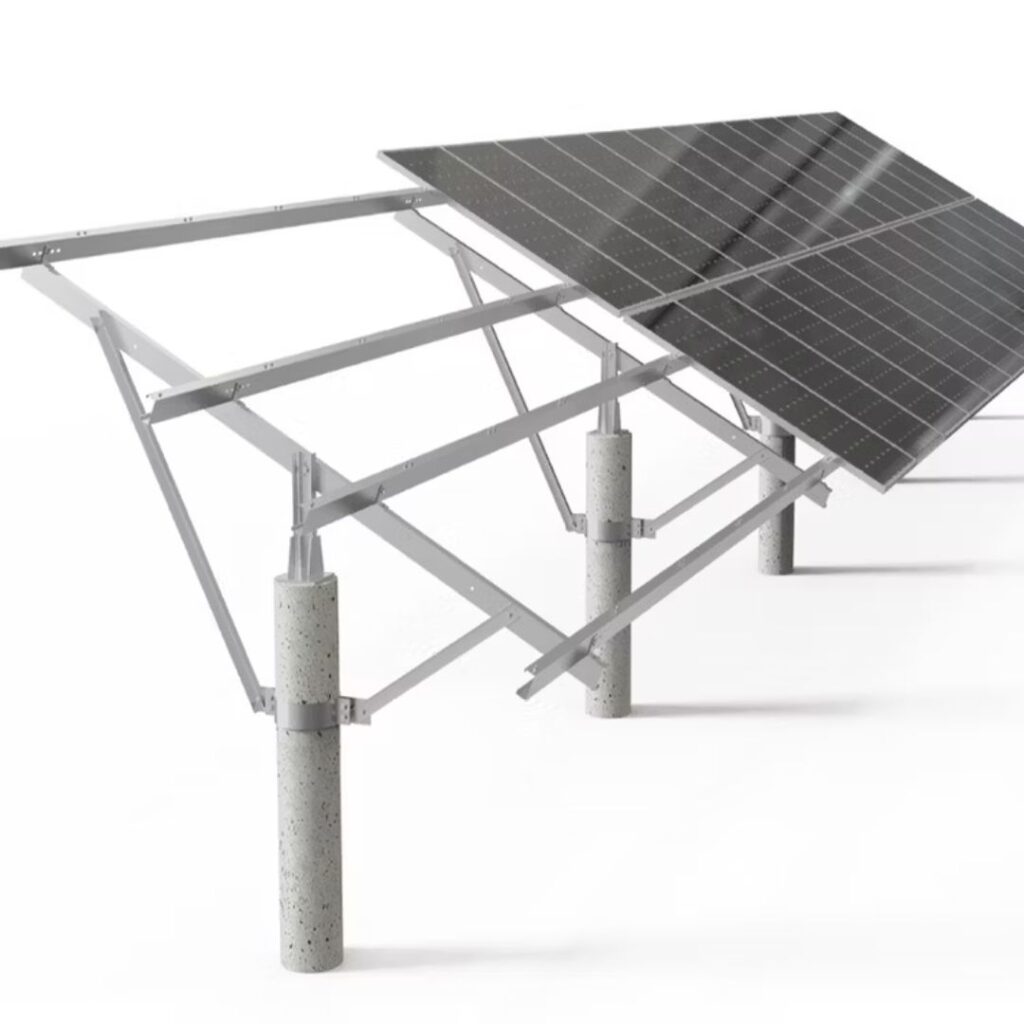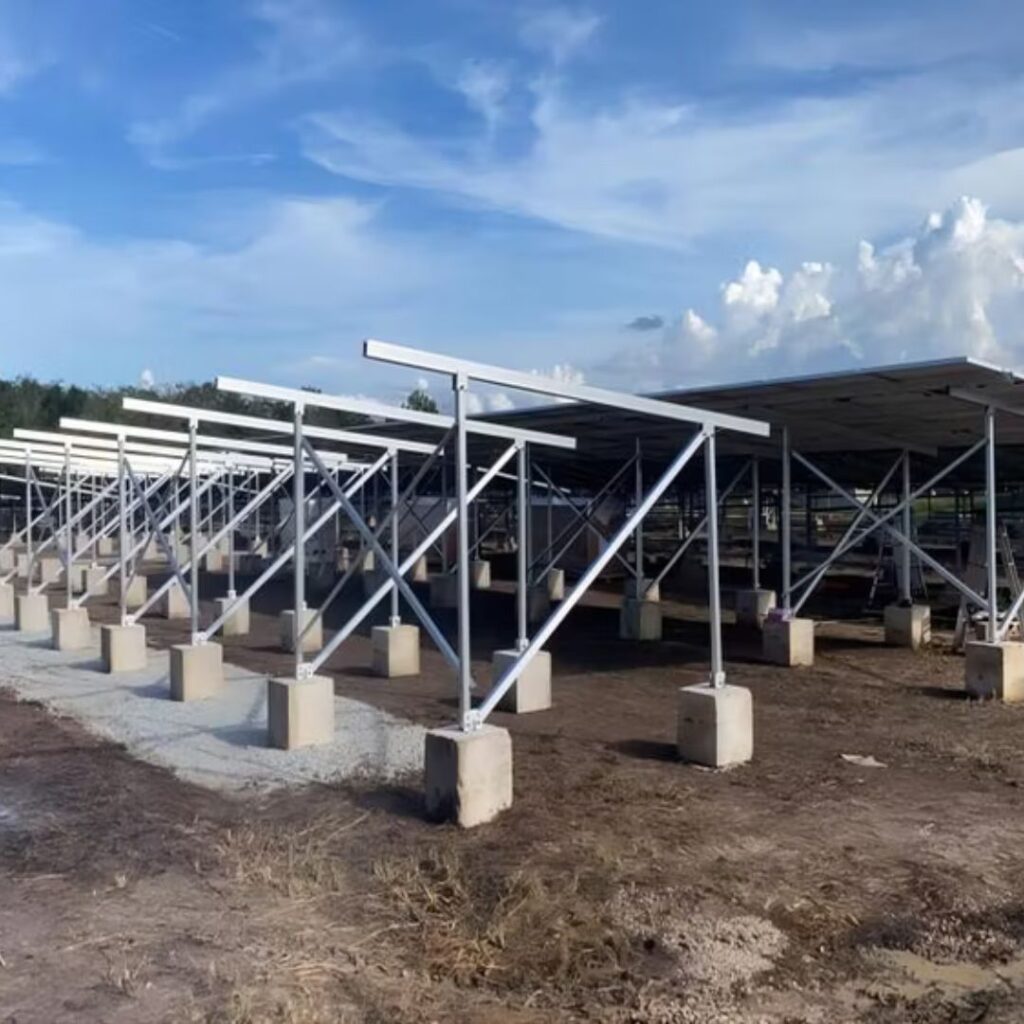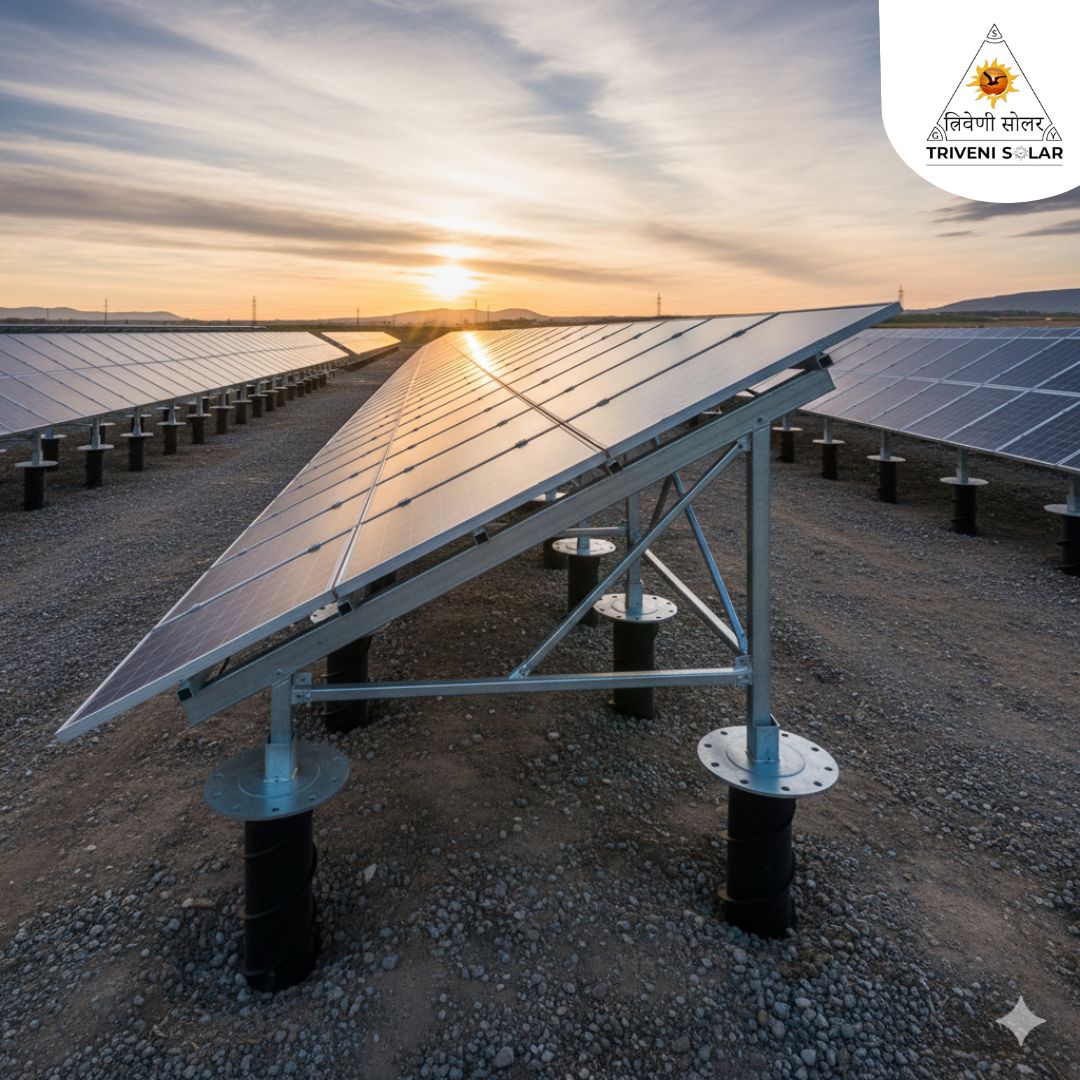Foundation pile mounting structures are the cornerstone of modern solar installations, offering unmatched durability, adaptability, and efficiency. Whether for commercial-scale solar farms or utility projects, these structures ensure your solar panels remain stable, properly aligned, and high-performing for decades. In this guide, we explore everything you need to know—types, materials, installation, maintenance, and real-world applications in India.
Table of Contents
- Why Choose Pile Mounting Structures for Solar Projects
- Types of Foundation Pile Mounting Structures
- Material Selection & Technical Specifications
- Installation Process: Step-by-Step Guide
- Advantages & Limitations
- Comparison: Pile vs Concrete Foundations
- Maintenance & Durability Tips
- Case Studies & Real-World Applications in India
- FAQs
- Conclusion & Brand CTA
Why Choose Foundation Pile Mounting Structures for Solar Projects
Choosing the right foundation is crucial for solar panel efficiency and longevity. Pile mounting structures offer a combination of adaptability, cost-efficiency, and minimal environmental impact.
Adaptable to Varied Soil & Terrain
Unlike concrete foundations, piles can be installed in diverse soil types, including sandy, clay, and moderately rocky terrains. This flexibility makes them ideal for regions across India with varying soil conditions.
Cost-Effective for Large-Scale Installations
Pile foundations reduce the need for extensive concrete, excavation, and heavy machinery. This makes them highly cost-efficient, especially for solar farms with hundreds or thousands of panels.
Reduced Construction Time & Environmental Impact
Installation of pile structures is faster than traditional concrete methods. Additionally, it causes minimal soil disturbance, reducing the environmental footprint of solar projects.
LSI Keywords: solar ground mounts, solar racking systems, tilt-adjustable solar mounts

Types of Foundation Pile Mounting Structures
Driven Piles
- Pros: High load capacity, stable under heavy wind loads.
- Cons: Requires heavy machinery, limited in extremely rocky soils.
- Applications: Large commercial solar farms with uniform terrain.
Helical Piles
- Installation: Screw into the ground using torque-driven machines.
- Soil Suitability: Works well in clay, sand, and mixed soil types.
- Advantages: Quick installation, adjustable for tilt, minimal concrete use.
Screw Piles & Adjustable Tilt Mounts
- Ideal for uneven terrains.
- Supports tilt-adjustable solar racks for optimal sunlight capture.
- Requires minimal foundation preparation.
Material Selection & Technical Specifications
Material choice affects durability, maintenance, and long-term performance. Most piles are made from galvanized steel or hot-dipped steel with anti-corrosion coatings.
| Material | Durability | Maintenance | Cost |
|---|---|---|---|
| Galvanized Steel | 20–25 years | Low | Medium |
| Hot-Dipped Steel | 25–30 years | Low | High |
| Concrete-Encased Steel | 30+ years | Medium | High |
Technical Specs: Load-bearing capacity ranges 10–50 kN per pile depending on soil and pile diameter. Recommended tilt angles: 10°–30° for optimum solar capture.
Foundation Pile Mounting Structures Installation Process: Step-by-Step Guide
Efficient installation ensures stability and long-term performance. Here’s a stepwise approach:
- Site Survey & Soil Testing: Determine soil type, load capacity, and terrain features.
- Marking & Layout: Plan panel positions and pile spacing for maximum sunlight exposure.
- Pile Driving / Screwing: Install piles with machinery or manual torque drive for screw piles.
- Mounting Structures: Attach racking system to piles with bolts and brackets.
- Panel Installation: Secure solar panels ensuring tilt and orientation.
- Safety & Quality Checks: Verify stability, alignment, and electrical grounding.
Foundation Pile Mounting Structures Advantages & Limitations
Pros
- Flexible installation in varied terrains
- Reduced construction and labor costs
- Environmentally friendly with minimal soil disturbance
- Supports tilt-adjustable solar mounts
Cons
- Requires specialized equipment for large installations
- Limited use in extremely rocky soil
- Higher initial cost for certain steel grades
Foundation Pile Mounting Structures Comparison: Pile vs Concrete Foundations
| Feature | Pile Foundation | Concrete Foundation |
|---|---|---|
| Installation Time | Quick (days) | Long (weeks) |
| Cost | Moderate | High |
| Durability | 20–30 years | 30+ years |
| Maintenance | Low | Medium |
| Environmental Impact | Low | High (excavation & concrete usage) |
Foundation Pile Mounting Structures Maintenance & Durability Tips
- Perform periodic inspections for corrosion or loose bolts
- Apply protective coatings every 5–7 years
- Adjust tilt seasonally to maximize sunlight capture
- Clean debris and vegetation around piles to avoid water accumulation

Case Studies & Real-World Applications in India
Several large-scale solar farms in India have successfully used pile mounting structures:
- Gujarat Solar Park – 150 MW: Helical piles reduced installation time by 25% and minimized concrete usage.
- Rajasthan Solar Farm – 100 MW: Driven piles provided robust performance on sandy soil with high wind loads.
- Maharashtra Commercial Solar – 20 MW: Adjustable tilt screw piles optimized solar energy capture across uneven terrain.
Frequently Asked Questions
What is a foundation pile mounting structure?
It is a support system for solar panels, installed by driving or screwing piles into the ground to ensure stability and optimal tilt for energy generation.
Which soil types are suitable for pile foundations?
Sandy, clay, and moderately rocky soils are suitable. Extremely hard rock may require specialized drilling techniques.
How long does installation take?
Installation typically ranges from a few days to a couple of weeks depending on project size and type of pile used.
What maintenance is required?
Periodic inspection for corrosion, bolt tightening, and protective coating application ensures long-term performance.
Are pile mounts better than concrete foundations?
Pile mounts are faster to install, flexible, and environmentally friendly, while concrete foundations offer higher long-term durability but require more resources.
Conclusion & Brand CTA
Foundation pile mounting structures provide a robust, cost-effective, and environmentally friendly solution for solar projects of any scale. Their adaptability, durability, and quick installation make them ideal for Indian terrains and large-scale solar farms.
Ready to install reliable, high-performance foundation pile mounting structures? Contact Solar Structure today for customized solutions tailored to your project needs!


